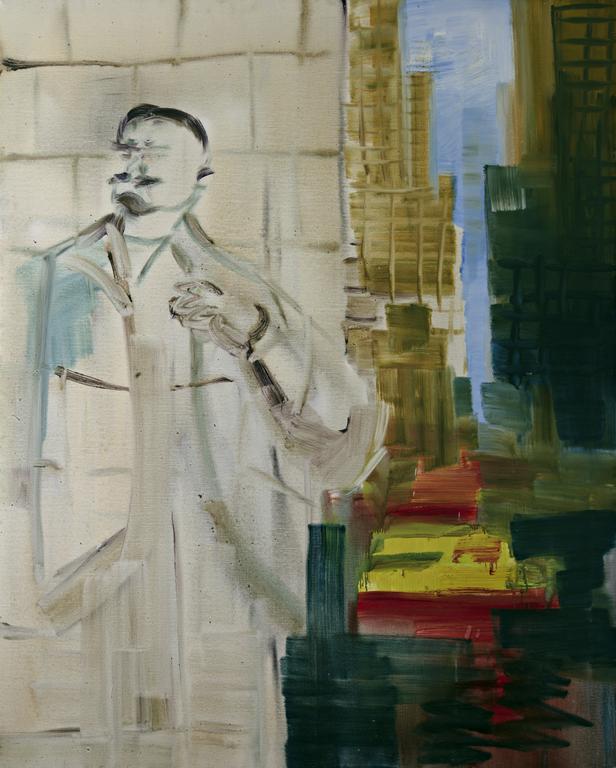Rainer Fetting: Leninplatz in New York, 1993 (Lenin Square in New York)

Oil on canvas, 160 x 200 cm
In the 1980s, Fetting found a second center of his life in New York in addition to his adopted hometown Berlin. Manhattan, one of New York's five districts and lively economic center of the city, represented an exotic, larger and even more multi-faceted version of life in Berlin. In addition, the urban jungle is one of Fetting's preferred themes, and he found much new inspiration for his artistic work in New York. He likes to combine what he sees with the imaginary (see also "Self-Portrait as Rembrandt on Leninplatz", 1991) and transfers historical personalities to another place in another time. These often unusual forms of representation reflect Fetting's state of mind and his striving for artistic freedom. At the time, Fetting challenged both the art market and society: his new, "wild" form of painting, his subjects, and also his openly practiced homosexuality were not without controversy. As much as success spoiled him on the one hand, restlessness and resistance to circumstances characterized his life on the other.
Here, a roughly sketched Lenin dominates this picture in the foreground, yet in terms of color he almost merges with the background of the concrete desert. On the right, one of the bright yellow New York taxis, which Fetting commemorated in numerous paintings, is vaguely depicted. Imagination and reality: Lenin himself was never in New York, nor is there a place named after him. Nevertheless, the revolutionary and then founder of the Soviet Union is present in this city: a statue of Lenin with his arm raised in greeting stood for around twenty years on a building in Red Square in the East Village and was moved to the Lower East Side in 2016.
Rainer Fetting (*1949 in Wilhelmshaven, Germany) is one of the best-known representatives of the Neue Wilde. He studied in Berlin from 1972 to 1978 and showed his first exhibitions at the Galerie am Moritzplatz. A scholarship from the DAAD (German Academic Exchange Service) took him to New York in 1978, where he lived temporarily between 1983 and 1994. The stay in both metropolises - Berlin and New York - had a profound influence on him and his art, so that numerous works by Fetting take up the life in these cities. In particular, he focuses on the Berlin Wall and the peripheral zones of New York. Fetting became an equally well-known, sought-after and restless artist: Almost every year he showed large solo exhibitions in renowned galleries and museums in Europe and the USA and participated in countless group exhibitions.
Fetting's work is expressive and colorful. In addition to big-city life, he prefers to paint the male nude and, in contrast, depictions of nature and landscapes. In addition, there are portraits and figures, watercolors, works on paper and photographs. Since 1986, he has been equally successful in creating bronze sculptures. The monumental Willy Brandt statue in the Willy Brandt House in Berlin is one of his most famous sculptures - it measures an impressive 3.40 meters and weighs more than 500 kg. Today Fetting lives and works in Berlin and on Sylt island.